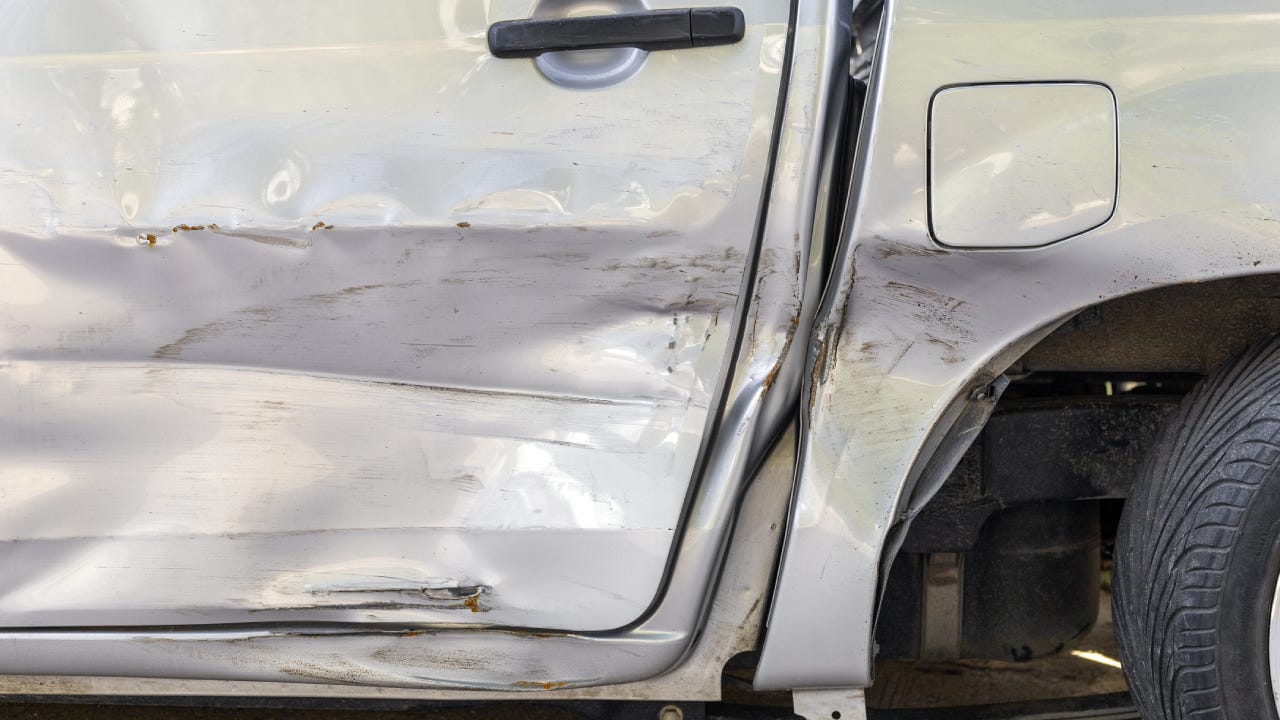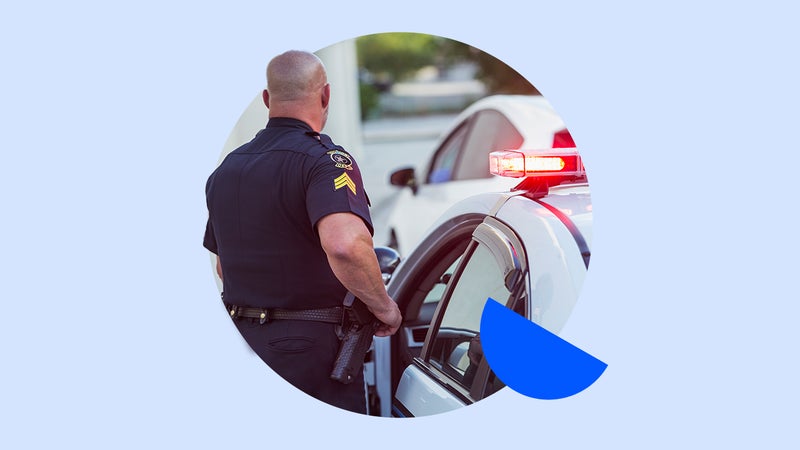Oregon hit-and-run laws: What do if it happens to you

The Bankrate promise
At Bankrate, we strive to help you make smarter financial decisions. To help readers understand how insurance affects their finances, we have licensed insurance professionals on staff who have spent a combined 47 years in the auto, home and life insurance industries. While we adhere to strict , this post may contain references to products from our partners. Here's an explanation of . Our content is backed by Coverage.com, LLC, a licensed entity (NPN: 19966249). For more information, please see our .
Hit-and-runs can come in many forms. A driver could speed off after rear-ending you. Or, you could walk out to your car parked on the street only to find it side-swiped. Whatever the case, it’s essential to know the proper steps to follow to maintain compliance with Oregon’s hit-and-run laws. Because even as the victim of a hit-and-run, you still have certain obligations of your own to avoid legal complications and to ensure accurate reporting to your car insurance provider. Bankrate’s team of insurance experts is here to walk you through everything you need to know.
Hit-and-runs in Oregon
A hit-and-run in Oregon can be characterized as any accident where one of the involved drivers leaves the scene without stopping. While hit-and-runs vary case by case, they often occur for one of two reasons.
One being that the fleeing driver is operating the vehicle without proper insurance, meaning they are trying to avoid financial and legal responsibility for the accident. The other potential reason is the driver is fleeing out of sheer panic. While this is a little more understandable given the stressful situation, it’s still considered a hit-and-run.
If you find yourself facing a hit-and-run — whether you are the victim or you caused the accident and fled — knowing how Oregon hit-and-run laws work can go a long way when handling the situation with the authorities and your insurance provider.
Oregon hit-and-run laws
The Oregon DMV requires that all drivers involved in an accident do four things:
- Stop: Oregon hit-and-run law requires all involved drivers to stop and stay at the scene of the accident (although they should move their vehicles out of the flow of traffic). If you fail to do so and are convicted of a hit-and-run, your driving privileges may be suspended or revoked.
- Help injured parties: At the scene of the accident, you generally should check on yourself and everyone else. You are required by law to do what you can to help anyone who is injured, including calling 911 for emergency medical care. If anyone is unconscious or killed, everyone involved is legally required to stay at the scene until the police arrive or they could be charged with a hit-and-run.
- Exchange information: The DMV offers a printable checklist that you can keep in your car to make sure you and the other involved drivers share the proper details.
- Report the accident to the DMV: Depending on the circumstances of the accident, you may need to fill out an accident report form and submit it to the DMV.
If you fail to follow any of these four procedures, per the hit-and-run Oregon statute, you could be convicted of a hit-and-run.
How hit-and-runs impact car insurance rates in Oregon
If you are convicted of a hit-and-run in Oregon, your insurance policy could be affected. Car insurance companies will likely see you as a high-risk driver and may increase your premium significantly. In some cases, your coverage may be dropped and you would need to search for a new car insurance provider.
If your insurance company decides to continue your coverage, you will most likely need an SR-22 form. This is a form that your car insurance provider files with the DMV on your behalf that proves that you carry at least the state-required insurance minimums. Typically, SR-22s must be on file for three to five years.
5 things to do after a hit-and-run in Oregon
If you find yourself the victim of a hit-and-run, what to do in Oregon looks virtually identical to what you could do in other states. You may want to:
- Stay at the scene: You might be tempted to chase after the fleeing driver, but most law enforcement agencies advise against this for your safety. You should probably stay put, but try to take note of the license plate number and other defining features of the at-fault car or driver as they flee the scene.
- Keep everyone safe: Your first priority should be getting yourself and anyone else involved, as well as your vehicles, out of the flow of traffic. That said, if someone is badly injured, the Oregon Department of Transportation advises against moving them. In that case, you should likely call 911 as quickly as possible.
- Call the police: If you’re involved in a hit-and-run in Oregon with no injury or medical assistance needed, you may still want to call the police. This allows an officer to be dispatched to the scene of the accident. The responding officer will likely gather evidence from you and other eyewitnesses to assist in the search for the hit-and-run driver.
- Write down what you remember: It may take time for an officer to reach the scene of the accident. While you wait, make a note of any details you can remember, including the other driver’s license plate number, the make and model of their vehicle and anything else that stands out to you.
- Start your insurance claim: You can usually file a claim by calling your insurance provider or using tools on the company’s website or app. The sooner you start your claim, the faster you can be on the road to recovery.
Will insurance cover a hit-and-run?
It might. There are several car insurance coverages in Oregon that could come into play after a hit-and-run:
- Liability insurance: The first line of hit-and-run Oregon insurance is the at-fault driver’s liability coverage, assuming that they can be tracked down. Under Oregon law, drivers are required to have both bodily injury liability insurance, which is designed to pay for injuries you and your passengers sustain, and property damage liability insurance, which pays to repair or replace your vehicle and other damaged property, up to the at-fault driver’s policy limits.
- Personal injury protection (PIP): Oregon also requires that all drivers carry PIP coverage, which is designed to pay for injuries, lost wages and other expenses for you and your passengers, regardless of who is at fault.
- Uninsured motorist bodily injury coverage: Oregon also requires that all drivers carry uninsured motorist coverage. If the other driver is located and does not have insurance, this coverage could pay for your injuries and for injuries that your passenger sustained.
- Uninsured motorist property damage: Although uninsured motorist property damage coverage is not required by Oregon law, it is available as an option. Uninsured motorist property damage is designed to pay for your damages, including damage to your vehicle, when you are hit by an uninsured motorist.
- Collision: If you have full coverage with collision coverage, the coverage could also help you pay for damage to your vehicle. You may have to pay a deductible, but some companies waive deductibles for hit-and-run scenarios.
Frequently asked questions
-
-
The cost of car insurance in Oregon varies by insurance company and depends on various personal factors including your driving record, vehicle type and your age. On average, full coverage car insurance in Oregon costs $1,846 annually (as of January 1, 2024). After a standard accident, the average premium jumps to $2,746 per year. But after a hit-and-run, Oregon insurance costs could skyrocket higher due to the high level of risk involved.
-
A hit-and-run in Oregon could stay on your driving record for a minimum of three to five years. A hit-and-run is considered a crime in the state, and one that results in injuries is considered a class C felony, coming with more serious penalties such as possible prison time.
-
Yes, if you fail to leave your information behind you could be charged with a hit-and-run even if you hit a parked vehicle. Oregon law mandates that you need to stop and try to locate the owner or operator of the vehicle. If you are unable to find them, you are required to leave a note with your name, address and a description of what happened.
-


